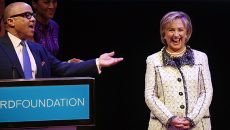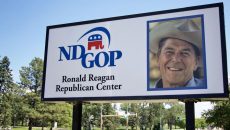Unemployment falls below 7 percent in PA for the first time in five years

By Eric Boehm | PA Independent
For the first time in five years, Pennsylvania‘s unemployment sits below 7 percent.
It’s a significant shift, if even only a symbolic one. But it’s not all great news.
The state Department of Labor and Industry on Friday reported an unemployment rate of 6.9 percent for December 2013, the first month since January 2009 the most prominent indicator of a state’s economic health dropped below 7 percent, though it is still higher than than 6.7 percent national unemployment rate for December.
Unemployment in Pennsylvania had been as high as 8.2 percent as recently as January 2013 — and 7.7 percent last August — so the decline in unemployment during the final months of 2013 was fairly dramatic, and even more so when you take a look at the rate in previous years.
Since the end of the recession in 2010, the unemployment rate has been stubbornly resistant to news of the economic recovery. It’s climbed and dipped a bit here and there, but had remained somewhere between 7.6 percent and 8.3 percent for more than three consecutive years.
Did Pennsylvania finally break the back of unemployment?
“Whenever the unemployment rate goes down, it’s a good thing as long as people are going back to work,” said Gene Barr, president of the Pennsylvania Chamber of Business and Industry. “But there is more to the picture than just the unemployment rate.”
The unemployment rate is not a perfect measure of economic health. It’s a crude instrument that divides the number of people counted as “unemployed,” meaning they are seeking work but not working, by the number of people in the state’s “labor force,” a measure of all people who are working or seeking work.
Anyone who has finished fourth grade can do the math.
The unemployment rate will fall when the numbers of unemployed people decline — a result of increasing employment, or people leaving the labor force through retirement or because they gave up looking for a job. It also will fall when the size of the labor force falls, assuming there is no change in the raw number of the unemployed.
In Pennsylvania, both things have happened.
LABOR ROLLER COASTER: The labor force grew steadily for more than a year before taking a dive in 2013, and pulling the unemployment rate down with it.
The number of people listed as “unemployed” by the federal Bureau of Labor Statistics declined by more than 50,000 during 2013. But the size of the state’s labor force fell as well, by more than 109,000 individuals.
It’s hard to tell exactly why the labor force declined by so much during 2013, said Mark Price, a labor economist at the Keystone Research Center, a liberal think tank in Harrisburg, but demographics are likely at least part of the reason.
Pennsylvania has one of the oldest average populations of any state, and with the baby boomer generation headed into retirement the labor force is likely to contract during the next several years.
Other explanations include people who have stopped looking for work — though that’s probably a smaller factor, Price said — and people making a choice to go back to school or otherwise take themselves out of the labor force for other pursuits, but it will take more time before a clear explanation of the decline becomes apparent.
Regardless of the reason for the decline, it is the reduction in the labor force that drove the declining unemployment rate during the past year.
“The increase in jobs is not happening at the pace that is necessary for the unemployment rate to be falling so much,” Price said. “We’re also not seeing wage growth, which would be a good indicator.”
The national economy is a necessary part of the equation, too.
“It really is impossible to separate out the federal side from the state side when you’re talking about things like this, and I think we have to get them on the same page,” Barr said .
Barr said his members, business leaders and job creators across the state, still are hesitant about hiring because of uncertainty with the Affordable Care Act, federal tax rates and regulatory issues.
Price said most forecasts are predicting modest job growth in 2014, which should help Pennsylvania as well. And the federal government seems to have learned to stop playing games with the economy, as it did several times in the past two years, he added.
Those changes in Pennsylvania’s economy are happening against the backdrop of the 2014 gubernatorial election, in which Gov. Tom Corbett is seeking to win a second term as the state’s chief executive.
APPROVAL RATINGS: The unemployment rate is falling, but Gov. Tom Corbett’s approval rating has been down for a while.
Crude though it might be, the unemployment rate is a crucial piece of the public’s evaluation of political leaders, and so it plays an important role in the upcoming gubernatorial election.
Last year, Barack Obama became the first president since Franklin Roosevelt in 1940 to win re-election with a national unemployment rate above 7.3 percent. The rate was 7.9 percent in October 2012, the last month before voters went to the polls to re-elect Obama.
If the rate continues to decline, it figures to help Corbett’s campaign, which is pushing a message of “more jobs, less taxes.”
“It’s a priority and something he wants to continue working on,” Billy Pitman, press secretary for Corbett’s re-election campaign team, said of the state’s unemployment situation.
Pitman talked up the governor’s recent announcements of a new skyscraper in Philadelphia for cable giant Comcast and a new warehouse for Nordstrom’s, a clothing store. Both projects promise to add jobs in the state.
As for the falling labor force?
“Look at what the Obama economy is doing around the country,” Pitman said. “Look at the new taxes on job creators and the Affordable Care Act. Those things are coming down the pike from Washington.
In short, the governor’s team plans to take credit for the good and blame Washington for the bad — and if they can tie Washington and the bad to Corbett’s Democratic opponents, even better.
Marc Eisenstein, a spokesman for the Democratic Party of Pennsylvania, pointed to the slow job growth and Pennsylvania’s poor fiscal health.
“Tom Corbett will continue to make excuses for his failed economy, but he has no one to blame but himself,” Eisenstein said. “Next November Pennsylvanians will elect a Democratic governor who will make sure Pennsylvania is once again a leader in job growth.”
How might the unemployment rate affect the race this year? It’s hard to say for sure.

CAN CORBETT WIN: Gov. Tom Corbett will likely not have the good economy enjoyed by many of his two-term predecessors, but he won’t have to face the high unemployment of 1982 either.
Governors in Pennsylvania have been allowed to seek a second term in office since 1970, which gives a small sample size for the sake of comparison.
Of the five governors to be successfully re-elected since 1970, four of them enjoyed unemployment rates below 6 percent in the month before they faced the voters.
The two most recent governors before Corbett enjoyed particularly good economic timing — Tom Ridge was re-elected in 1998 with an unemployment rate of 4.5 percent, and Ed Rendell won a second term in 2006 with the same 4.5 percent unemployment rate.
Corbett would be in very good shape if the rate dips that low by October, but unemployment might not be as much of a factor as it seems.
In 1982, in the midst of a recession and with unemployment in Pennsylvania at a staggering 12.2 percent, voters gave Dick Thornburgh a second term in office.
Boehm is a reporter for PA Independent and can be reached at Eric@PAIndependent.com. Follow @EricBoehm87 and @PAIndependent on Twitter for more.
The post Unemployment falls below 7 percent in PA for the first time in five years appeared first on Watchdog.org.







